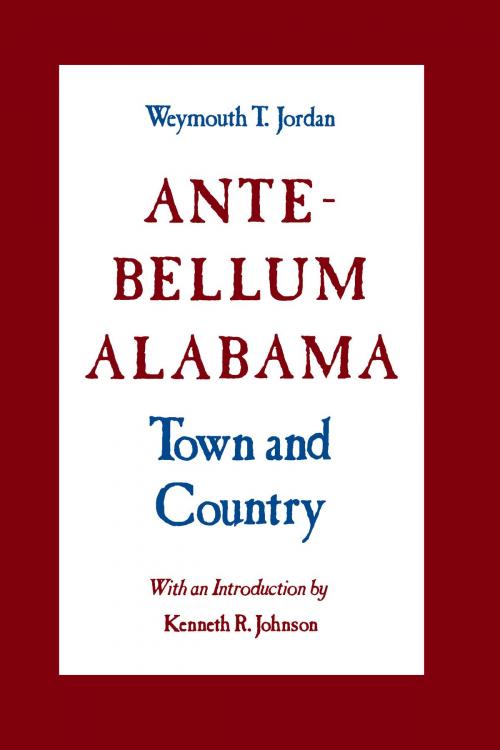| Author: | Weymouth T. Jordan | ISBN: | 9780817388676 |
| Publisher: | University of Alabama Press | Publication: | August 26, 2014 |
| Imprint: | University Alabama Press | Language: | English |
| Author: | Weymouth T. Jordan |
| ISBN: | 9780817388676 |
| Publisher: | University of Alabama Press |
| Publication: | August 26, 2014 |
| Imprint: | University Alabama Press |
| Language: | English |
Ante-Bellum Alabama: Town and Country was written to give the reader insight into importaant facers of Alabama’s ante-bellum history. Presented in the form of case studies from the pre—Civil War period, the book deals with a city, a town, a planter’s family, rural social life, attitudes concerning race, and Alabama’s early agricultural and industrial development.
Ante-bellum Alabama’s primary interest was agriculture; the chief crop was King Cotton; and most of the people were agriculturalists. Towns and cities came into existence to supply the agricultural needs of the state and to process and distribute farm commodities. Similarly, Alabama’s industrial development began with the manufacture of implements for farm use, in response to the state’s agricultural needs. Rural-agriculture influences dominated the American scene; and in this respect Alabama was typical of her region as well as of most of the United States.
Ante-Bellum Alabama: Town and Country was written to give the reader insight into importaant facers of Alabama’s ante-bellum history. Presented in the form of case studies from the pre—Civil War period, the book deals with a city, a town, a planter’s family, rural social life, attitudes concerning race, and Alabama’s early agricultural and industrial development.
Ante-bellum Alabama’s primary interest was agriculture; the chief crop was King Cotton; and most of the people were agriculturalists. Towns and cities came into existence to supply the agricultural needs of the state and to process and distribute farm commodities. Similarly, Alabama’s industrial development began with the manufacture of implements for farm use, in response to the state’s agricultural needs. Rural-agriculture influences dominated the American scene; and in this respect Alabama was typical of her region as well as of most of the United States.















